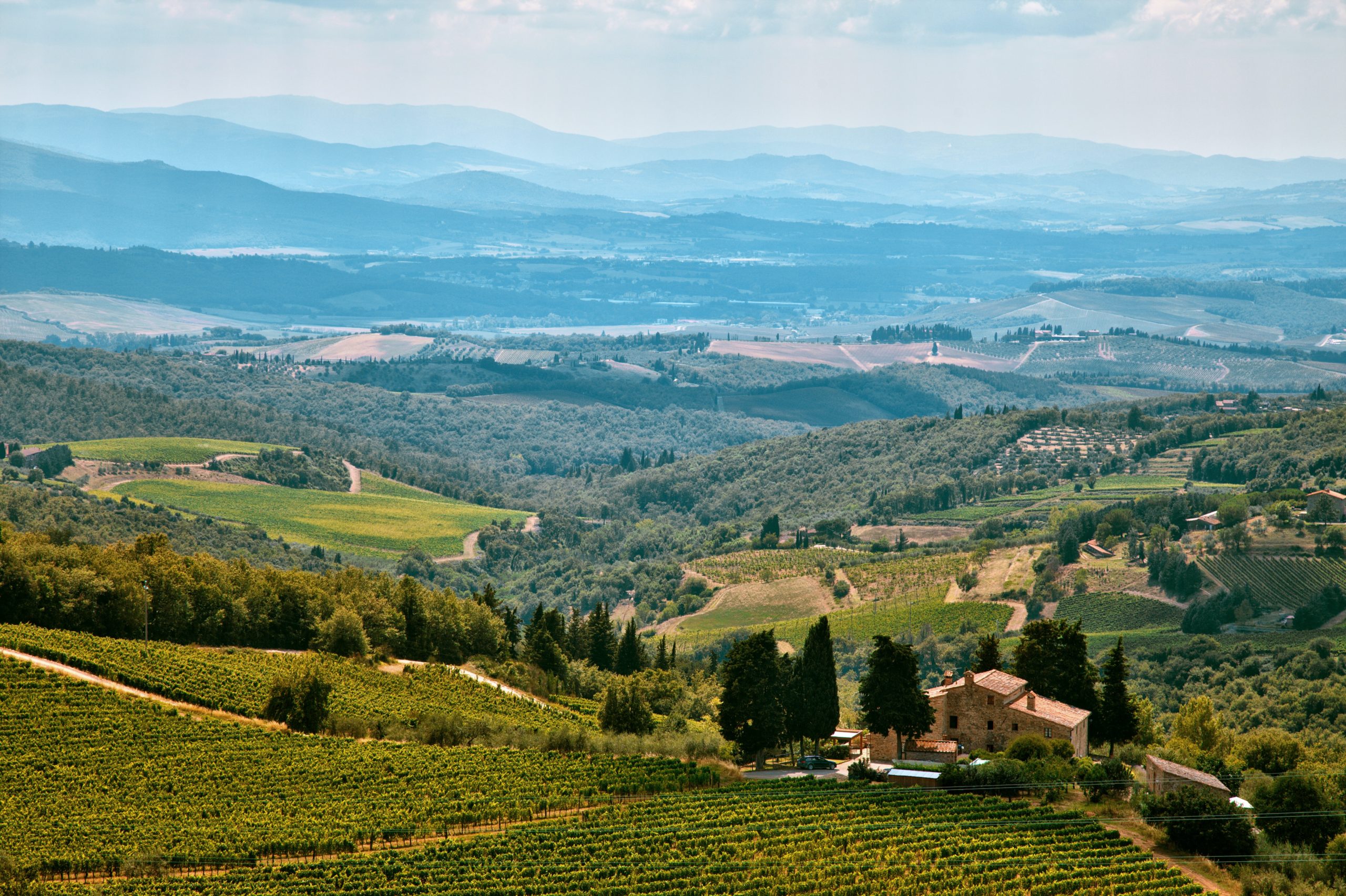
The case study in this article is an extract of a study on future carbon farming regulation performed by Mathieu Willard of ARC2020, by request of the Greens/EFA in the European Parliament. The possibilities of use synergy by private companies is an analysis considered by Ashley Parsons.
Examining Rete Rurale Nazionale
If climate change must be assessed on a global scale, its effects will be specific to local ecosystems. Approaching climate change mitigation with local and regional strategies can allow for compatible preventive solutions and adaptations. Zooming in on a territory, especially in regard to agriculture, allows for the design of tailored solutions, with lower chances of producing unpredictable undesirable effects and better chances to create transition dynamics.
Regional or local authorities could decide to be instigators of a carbon farming certification scheme. They also could create a specific Voluntary Carbon Market (VCM) for their scheme. Rete Rurale Nazionale (RRN) proposed a methodology to implement what could be called a district certification scheme for carbon farming. The certificates sold, called sustainability credits, are produced mainly through the implementation of agroforestry and sold to livestock farmers. This project can teach us valuable lessons on regional governance of carbon farming.
RRN’s Approach To Carbon Farming
The basic functioning of the system proposed is the same as a large-scale certification scheme. Farmers can decide to implement new practices and produce certificates; these are called sustainability credits. In this case, it is mostly agroforestry practices that are implemented to produce sustainability credits that will be bought by livestock farmers.
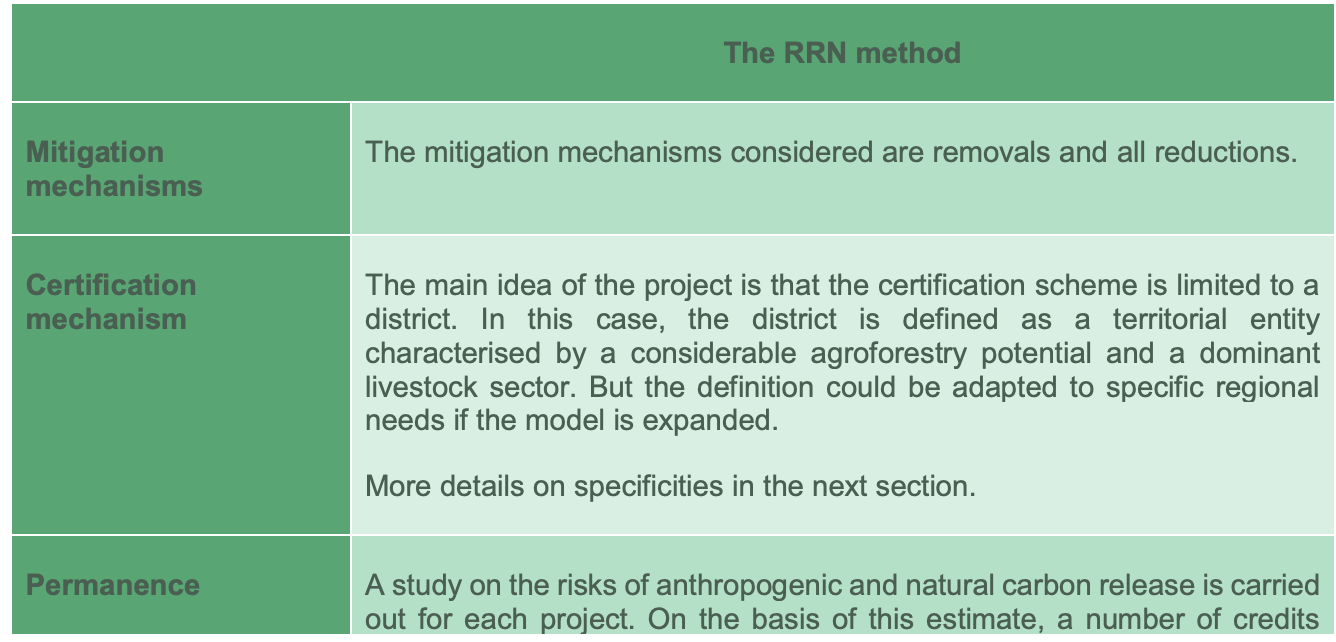
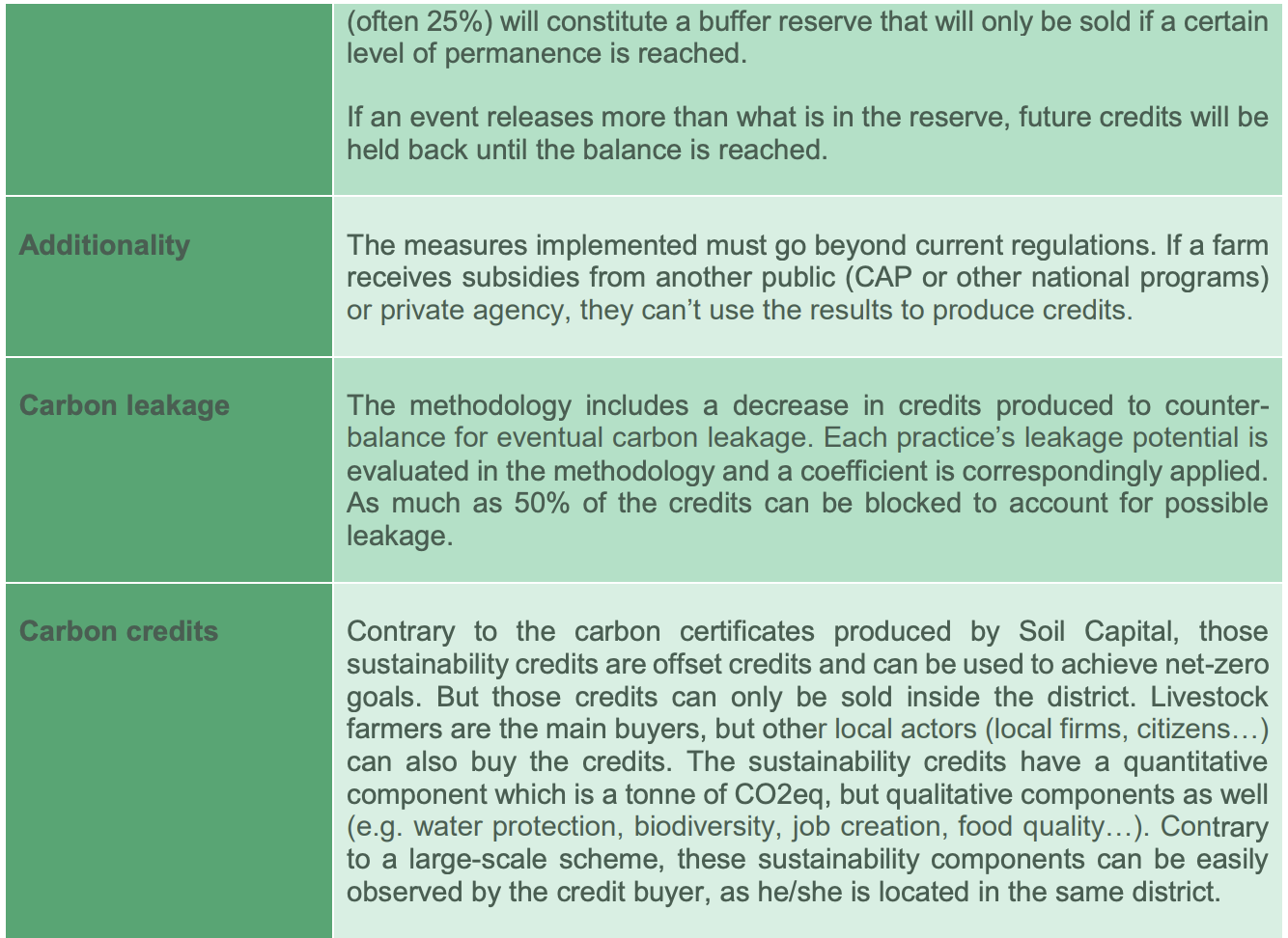
Table 4: Synthesis of RRN’s carbon farming method (source: RRN’s methodology)
Governance Modalities: The Actors
To begin a program in an area, the geographical perimeter of a district must be established, and an institutional governance body must be identified or created to lead the project. The body must include representatives of a local public institution (region, municipality…) and a control room must be created. The control room will deal with the implementation and monitoring of the program. Before the program can begin, a participative and inclusive process with all implicated actors must have been led by the governance body.
The project will be assessed by a higher authority that functions around a technical-scientific committee to be sure it conforms to the standards and regulations. In the case of RRN, the higher authority is the ISMEA (Institute for Agricultural and Food Market Services). All district projects must also be displayed for public consultation for a minimum of thirty days.
Overall, the program brings together four types of actors:
- Higher authority with a technical-scientific committee
- District governance body with a control room
- Credit sellers
- Credit buyers
A specific methodology for quantification of the mitigation results must be assigned to each eligible activity. All the participants, buyers and sellers of credits, can then use a logo for marketing purposes.
Governance modalities: the MARC approach
The possibility of purchasing offset credits should not constitute a right to pollute. Climate change mitigation actions should therefore be implemented in a chronological order. For that purpose, every credit buyer must comply with the MARC approach: measure, avoid, reduce, compensate.
Before being able to buy sustainability credits, the buyer must prove that he/she took all the measures to avoid and reduce its emissions first. For that purpose, a clear rulebook for avoidance and reduction practices must be determined by the managing authorities. In the case of RRN, as the majority of the buyers are livestock farmers, the rulebook would mainly outline avoidance and reduction practices linked to livestock management. In another configuration of the same type of program, this rulebook should be adapted to the context of the buyers. In any case, it will be easier to have an efficient MARC approach if the diversity of buyers is not too high.
Contrary to the compensating practices of the program, the compliance with MARC for buyers can be achieved by using other types of funding (public, private…).
Governance Modalities: Public Registries
The district governing body will implement a registry of activities and credits accessible on a public website. Each district will manage its own registry, but the registries of all the districts should be transparent and comparable with each other. A common website managed by the higher authority will display all the registries.
The districts, their registries and all the actors involved in the program should be geo-referenced on the common site. All credits must be trackable, and the registry has to be constituted of two sections: one dispatching all the data on the emissions of the credit buyers and one dispatching all the data on the credit produced.
This methodology will also ensure that the credits can only be traded inside the district.
Governance Modalities: Credit Generation
The monitoring period during which credits can be issued will vary according to the type of practice implemented. It can range from 10 to 20 years. The sold credits are not the property of the buyer who can’t resell them.
In order to guarantee the transparency and credibility of the credits produced, the effective and correct implementation of the practice will have to be verified by the district governance body. To this end, spot checks have to be organised.
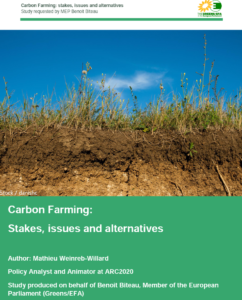
Key lessons – Integrity, Transparency, Verification
- The regional governance of carbon farming can ensure the integrity of a certification scheme as it allows to easily implement innovative governance tools.
- On a regional level, it is easier to ensure that compensations are permitted only after avoidances and reductions have been implemented. The MARC approach is one way to do this.
- On a regional level, it is easier to ensure that carbon farming enhances local dynamics of transition, through the collaboration between close actors and under the supervision of a managing authority that has a complete view of the district’s emissions and issued credits.
- Transparent and thorough public registries can ensure the credibility of carbon farming projects on a regional level.
- On a regional level, the sustainability co-benefits of implemented practices can be easily assessed and verified.
- VCMs can be restricted to small areas and still be effective. The actors involved in the VCM can easily be checked for compliance with the rules of participation of the market.

Possibilities Across The EU
Ashley Parsons
What would it look like if a private enterprise integrated into this public and regional management of carbon farming? A brief example with Genesis Soil Health (France).
Pierre Arbelet, technical lead at Genesis Soil Health spoke to ARC2020 about the environmental rating agency’s implication in the future of carbon farming. At present, Genesis works largely with corporate clients to evaluate the environmental impact of agricultural practices through soil health rating, taking into account +35 indicators.
Genesis does not directly integrate carbon storage into their rating at the moment, but according to Arbelet, “we provide an indication of current carbon stocks to our clients based on the measurement of organic carbon content and soil density.” Stock = content x density x depth. In development is “the integration of models of carbon storage dynamics.”
Will this technology be accessible to farmers across Europe in the near future? In France, Arbelet says that, “we have been in contact with regions that want to promote their agroecological transition,” although a project has not yet officially begun with any one region.
Another project to watch, developed under the supervision of Agri Sud Ouest, an innovation center, and financed by two regions and three metropoles, is Solnovo. It seems regions in France are already seeking to follow a similar pathway to that of RRN in Italy, but what remains to be seen is how these will be governed and implemented.
New ARC Report | Carbon Farming – Stakes, Issues and Alternatives
Post-Brexit Farm Policy – Where Do England’s Smallholdings and Horticulture Sector Stand?
Is the EU Positive about Reaching Carbon Negative? New ARC report shows more work needed
Position Paper on Soil Carbon Sequestration and its Possible Remuneration through CO2 Certificates
https://www.arc2020.eu/wp-content/uploads/2023/02/seed-peas-678×509.jpg



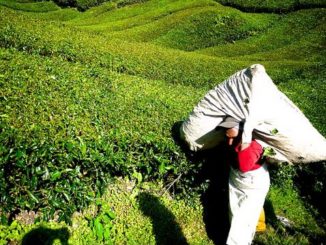
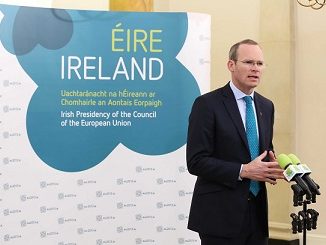
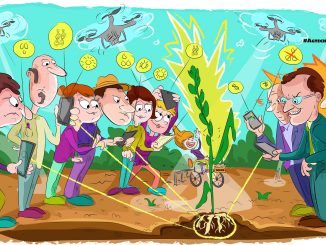
2 Trackbacks / Pingbacks
Comments are closed.